Environmental Sustainability Report: Human Impact and Solutions
VerifiedAdded on 2022/08/12
|6
|1122
|32
Report
AI Summary
This report provides an overview of sustainability, examining the intricate relationship between humans and nature. It delves into various aspects, including the impact of human activities, different coping methods, and the importance of biodiversity and ecosystems for a sustainable future. The report explores human efforts to enable biodiversity and ecosystem functions, variations in agricultural production, and water resource management strategies. It also discusses methods for maintaining a habitable atmosphere, climate, and sustainable waste management practices, offering insights into present waste management approaches. The summary concludes by highlighting the concept of economic sustainability and its key components, along with the major challenges in sustainable development.
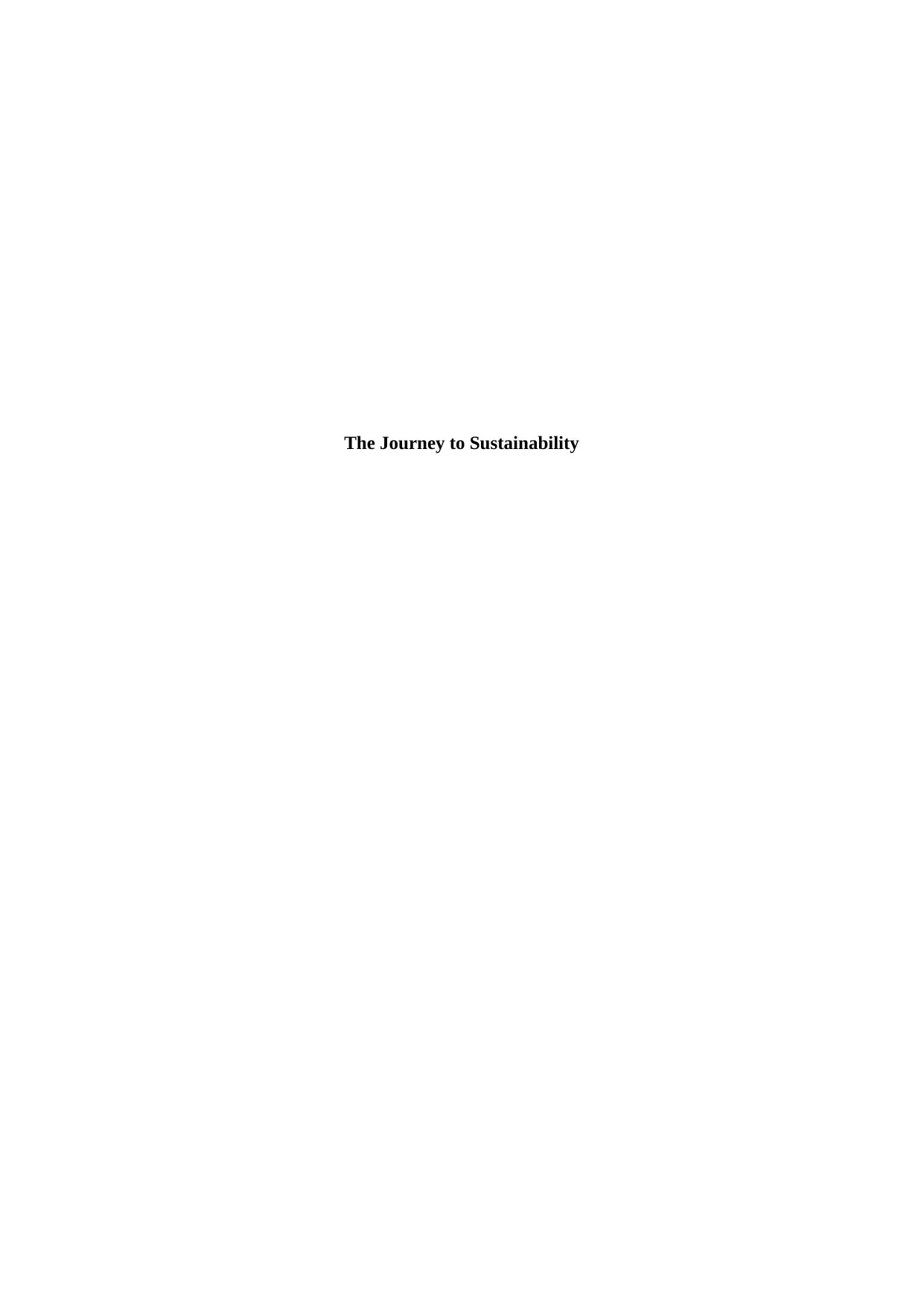
The Journey to Sustainability
Paraphrase This Document
Need a fresh take? Get an instant paraphrase of this document with our AI Paraphraser
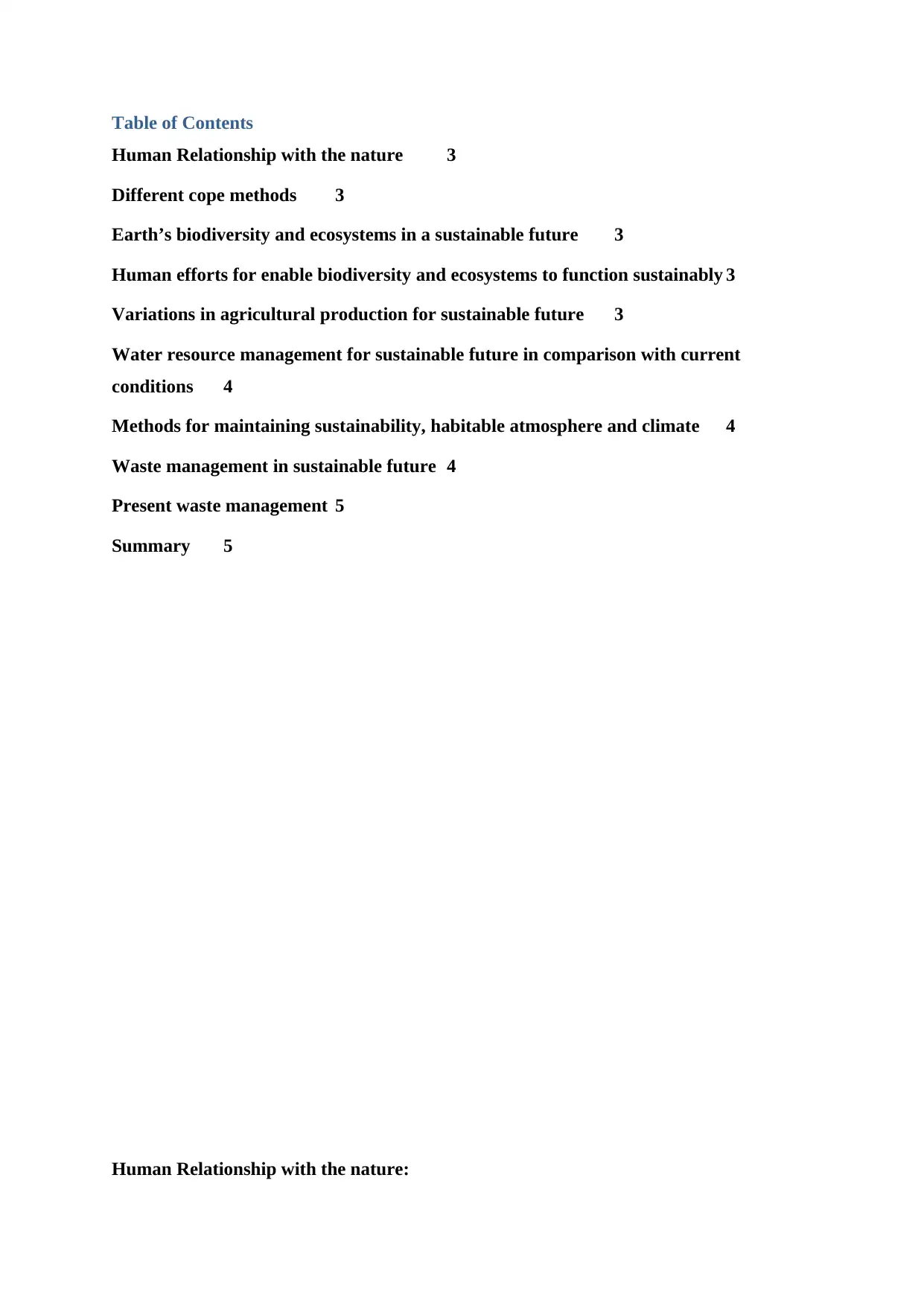
Table of Contents
Human Relationship with the nature 3
Different cope methods 3
Earth’s biodiversity and ecosystems in a sustainable future 3
Human efforts for enable biodiversity and ecosystems to function sustainably 3
Variations in agricultural production for sustainable future 3
Water resource management for sustainable future in comparison with current
conditions 4
Methods for maintaining sustainability, habitable atmosphere and climate 4
Waste management in sustainable future 4
Present waste management 5
Summary 5
Human Relationship with the nature:
Human Relationship with the nature 3
Different cope methods 3
Earth’s biodiversity and ecosystems in a sustainable future 3
Human efforts for enable biodiversity and ecosystems to function sustainably 3
Variations in agricultural production for sustainable future 3
Water resource management for sustainable future in comparison with current
conditions 4
Methods for maintaining sustainability, habitable atmosphere and climate 4
Waste management in sustainable future 4
Present waste management 5
Summary 5
Human Relationship with the nature:
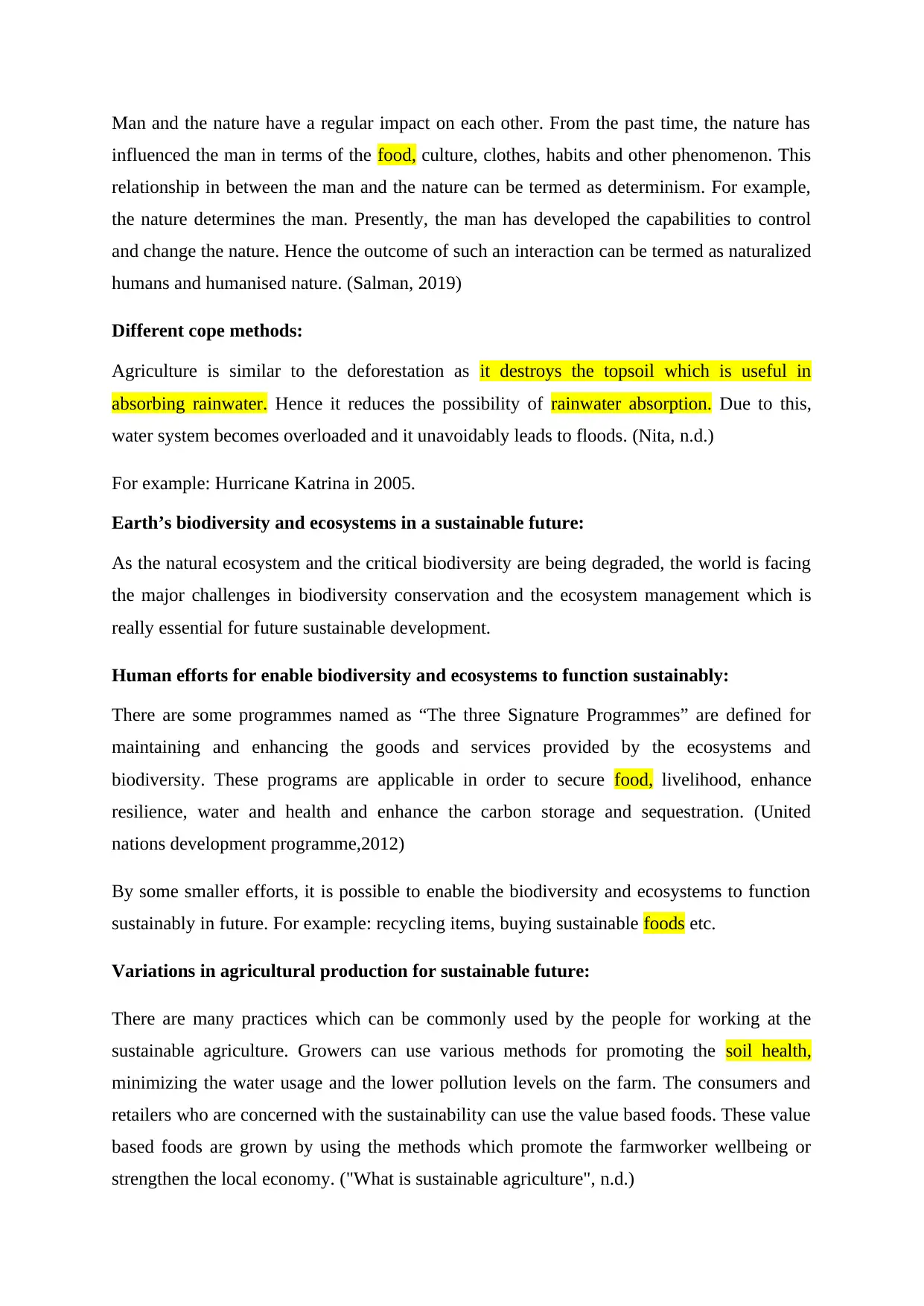
Man and the nature have a regular impact on each other. From the past time, the nature has
influenced the man in terms of the food, culture, clothes, habits and other phenomenon. This
relationship in between the man and the nature can be termed as determinism. For example,
the nature determines the man. Presently, the man has developed the capabilities to control
and change the nature. Hence the outcome of such an interaction can be termed as naturalized
humans and humanised nature. (Salman, 2019)
Different cope methods:
Agriculture is similar to the deforestation as it destroys the topsoil which is useful in
absorbing rainwater. Hence it reduces the possibility of rainwater absorption. Due to this,
water system becomes overloaded and it unavoidably leads to floods. (Nita, n.d.)
For example: Hurricane Katrina in 2005.
Earth’s biodiversity and ecosystems in a sustainable future:
As the natural ecosystem and the critical biodiversity are being degraded, the world is facing
the major challenges in biodiversity conservation and the ecosystem management which is
really essential for future sustainable development.
Human efforts for enable biodiversity and ecosystems to function sustainably:
There are some programmes named as “The three Signature Programmes” are defined for
maintaining and enhancing the goods and services provided by the ecosystems and
biodiversity. These programs are applicable in order to secure food, livelihood, enhance
resilience, water and health and enhance the carbon storage and sequestration. (United
nations development programme,2012)
By some smaller efforts, it is possible to enable the biodiversity and ecosystems to function
sustainably in future. For example: recycling items, buying sustainable foods etc.
Variations in agricultural production for sustainable future:
There are many practices which can be commonly used by the people for working at the
sustainable agriculture. Growers can use various methods for promoting the soil health,
minimizing the water usage and the lower pollution levels on the farm. The consumers and
retailers who are concerned with the sustainability can use the value based foods. These value
based foods are grown by using the methods which promote the farmworker wellbeing or
strengthen the local economy. ("What is sustainable agriculture", n.d.)
influenced the man in terms of the food, culture, clothes, habits and other phenomenon. This
relationship in between the man and the nature can be termed as determinism. For example,
the nature determines the man. Presently, the man has developed the capabilities to control
and change the nature. Hence the outcome of such an interaction can be termed as naturalized
humans and humanised nature. (Salman, 2019)
Different cope methods:
Agriculture is similar to the deforestation as it destroys the topsoil which is useful in
absorbing rainwater. Hence it reduces the possibility of rainwater absorption. Due to this,
water system becomes overloaded and it unavoidably leads to floods. (Nita, n.d.)
For example: Hurricane Katrina in 2005.
Earth’s biodiversity and ecosystems in a sustainable future:
As the natural ecosystem and the critical biodiversity are being degraded, the world is facing
the major challenges in biodiversity conservation and the ecosystem management which is
really essential for future sustainable development.
Human efforts for enable biodiversity and ecosystems to function sustainably:
There are some programmes named as “The three Signature Programmes” are defined for
maintaining and enhancing the goods and services provided by the ecosystems and
biodiversity. These programs are applicable in order to secure food, livelihood, enhance
resilience, water and health and enhance the carbon storage and sequestration. (United
nations development programme,2012)
By some smaller efforts, it is possible to enable the biodiversity and ecosystems to function
sustainably in future. For example: recycling items, buying sustainable foods etc.
Variations in agricultural production for sustainable future:
There are many practices which can be commonly used by the people for working at the
sustainable agriculture. Growers can use various methods for promoting the soil health,
minimizing the water usage and the lower pollution levels on the farm. The consumers and
retailers who are concerned with the sustainability can use the value based foods. These value
based foods are grown by using the methods which promote the farmworker wellbeing or
strengthen the local economy. ("What is sustainable agriculture", n.d.)
⊘ This is a preview!⊘
Do you want full access?
Subscribe today to unlock all pages.

Trusted by 1+ million students worldwide
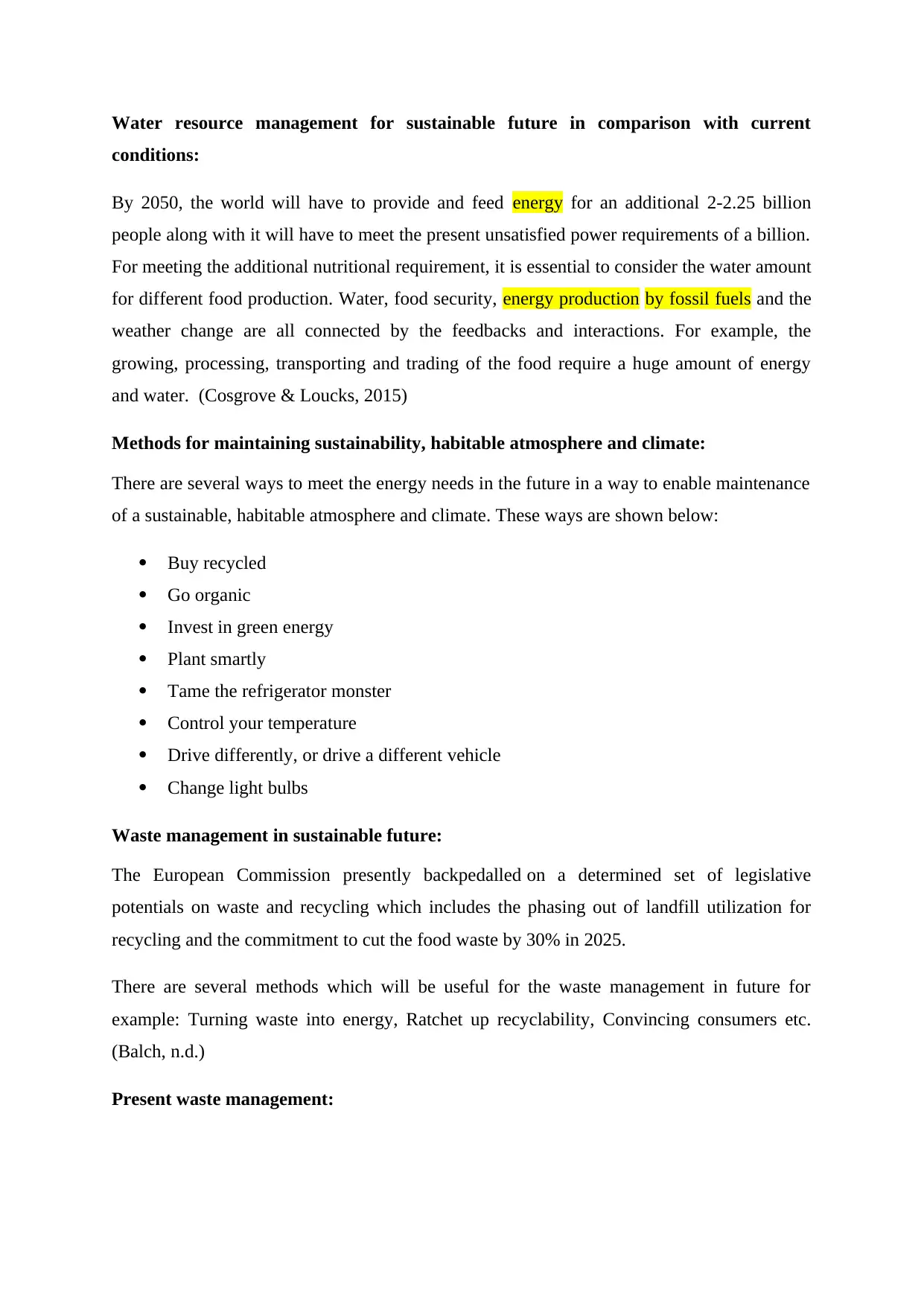
Water resource management for sustainable future in comparison with current
conditions:
By 2050, the world will have to provide and feed energy for an additional 2-2.25 billion
people along with it will have to meet the present unsatisfied power requirements of a billion.
For meeting the additional nutritional requirement, it is essential to consider the water amount
for different food production. Water, food security, energy production by fossil fuels and the
weather change are all connected by the feedbacks and interactions. For example, the
growing, processing, transporting and trading of the food require a huge amount of energy
and water. (Cosgrove & Loucks, 2015)
Methods for maintaining sustainability, habitable atmosphere and climate:
There are several ways to meet the energy needs in the future in a way to enable maintenance
of a sustainable, habitable atmosphere and climate. These ways are shown below:
Buy recycled
Go organic
Invest in green energy
Plant smartly
Tame the refrigerator monster
Control your temperature
Drive differently, or drive a different vehicle
Change light bulbs
Waste management in sustainable future:
The European Commission presently backpedalled on a determined set of legislative
potentials on waste and recycling which includes the phasing out of landfill utilization for
recycling and the commitment to cut the food waste by 30% in 2025.
There are several methods which will be useful for the waste management in future for
example: Turning waste into energy, Ratchet up recyclability, Convincing consumers etc.
(Balch, n.d.)
Present waste management:
conditions:
By 2050, the world will have to provide and feed energy for an additional 2-2.25 billion
people along with it will have to meet the present unsatisfied power requirements of a billion.
For meeting the additional nutritional requirement, it is essential to consider the water amount
for different food production. Water, food security, energy production by fossil fuels and the
weather change are all connected by the feedbacks and interactions. For example, the
growing, processing, transporting and trading of the food require a huge amount of energy
and water. (Cosgrove & Loucks, 2015)
Methods for maintaining sustainability, habitable atmosphere and climate:
There are several ways to meet the energy needs in the future in a way to enable maintenance
of a sustainable, habitable atmosphere and climate. These ways are shown below:
Buy recycled
Go organic
Invest in green energy
Plant smartly
Tame the refrigerator monster
Control your temperature
Drive differently, or drive a different vehicle
Change light bulbs
Waste management in sustainable future:
The European Commission presently backpedalled on a determined set of legislative
potentials on waste and recycling which includes the phasing out of landfill utilization for
recycling and the commitment to cut the food waste by 30% in 2025.
There are several methods which will be useful for the waste management in future for
example: Turning waste into energy, Ratchet up recyclability, Convincing consumers etc.
(Balch, n.d.)
Present waste management:
Paraphrase This Document
Need a fresh take? Get an instant paraphrase of this document with our AI Paraphraser
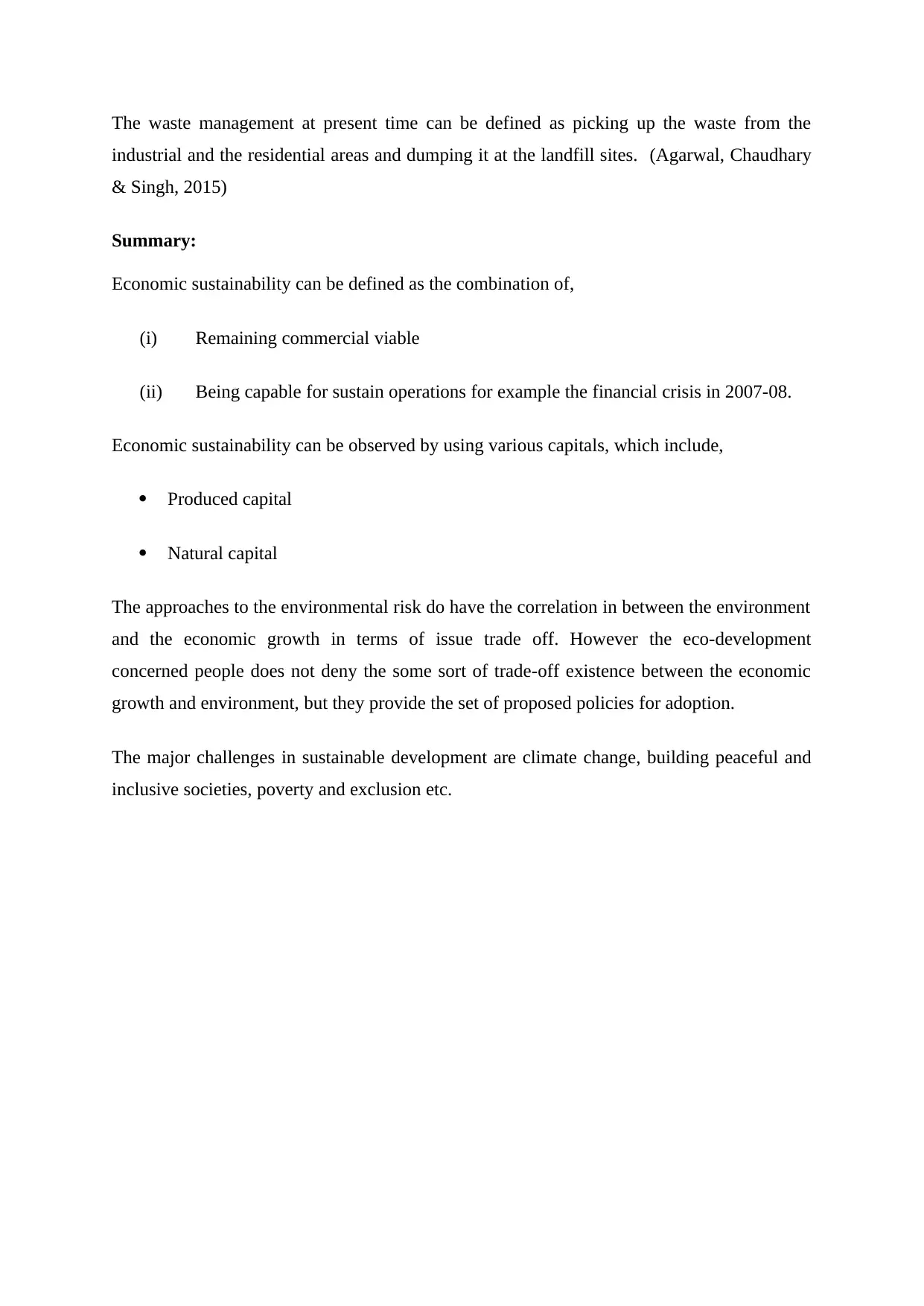
The waste management at present time can be defined as picking up the waste from the
industrial and the residential areas and dumping it at the landfill sites. (Agarwal, Chaudhary
& Singh, 2015)
Summary:
Economic sustainability can be defined as the combination of,
(i) Remaining commercial viable
(ii) Being capable for sustain operations for example the financial crisis in 2007-08.
Economic sustainability can be observed by using various capitals, which include,
Produced capital
Natural capital
The approaches to the environmental risk do have the correlation in between the environment
and the economic growth in terms of issue trade off. However the eco-development
concerned people does not deny the some sort of trade-off existence between the economic
growth and environment, but they provide the set of proposed policies for adoption.
The major challenges in sustainable development are climate change, building peaceful and
inclusive societies, poverty and exclusion etc.
industrial and the residential areas and dumping it at the landfill sites. (Agarwal, Chaudhary
& Singh, 2015)
Summary:
Economic sustainability can be defined as the combination of,
(i) Remaining commercial viable
(ii) Being capable for sustain operations for example the financial crisis in 2007-08.
Economic sustainability can be observed by using various capitals, which include,
Produced capital
Natural capital
The approaches to the environmental risk do have the correlation in between the environment
and the economic growth in terms of issue trade off. However the eco-development
concerned people does not deny the some sort of trade-off existence between the economic
growth and environment, but they provide the set of proposed policies for adoption.
The major challenges in sustainable development are climate change, building peaceful and
inclusive societies, poverty and exclusion etc.
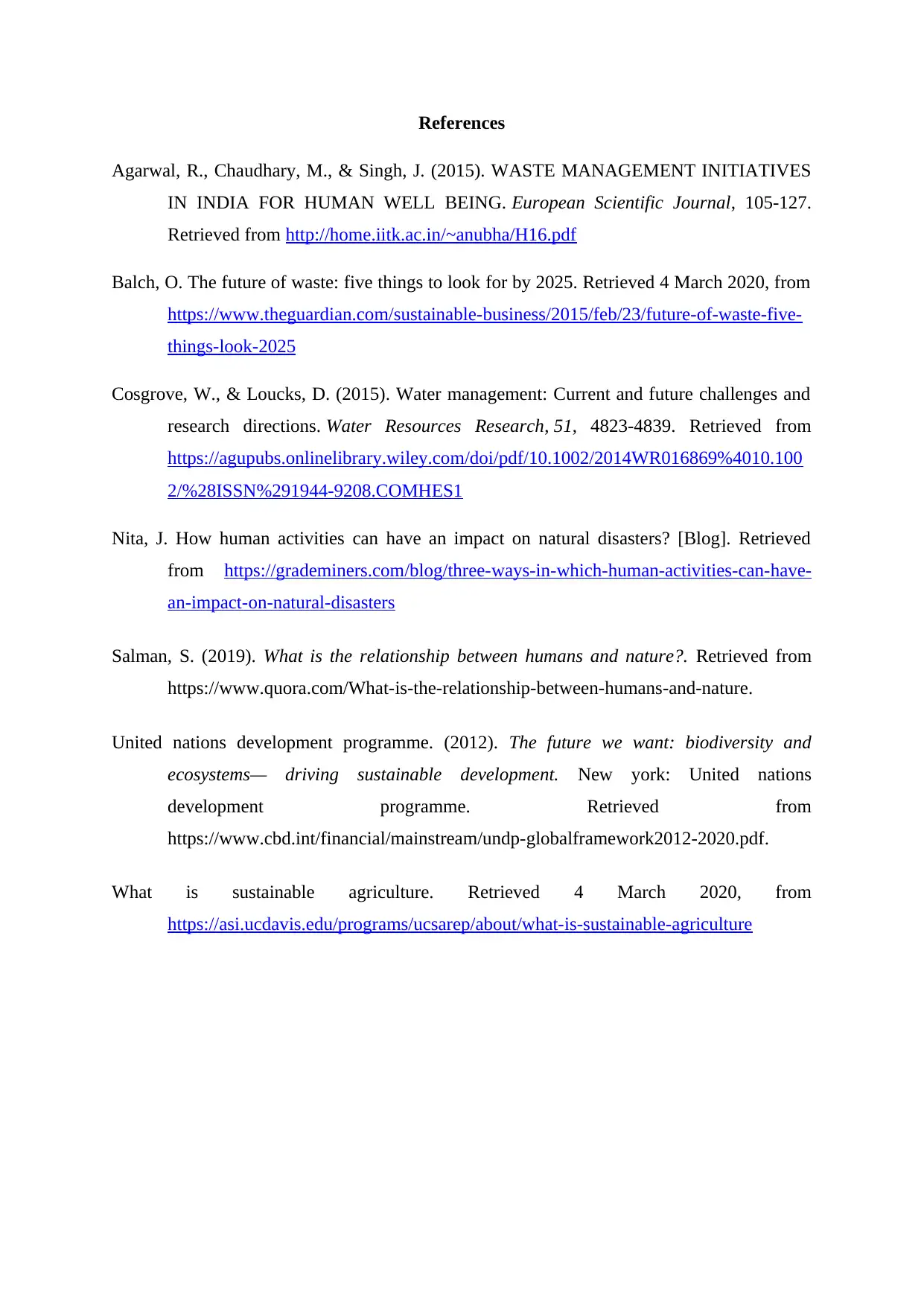
References
Agarwal, R., Chaudhary, M., & Singh, J. (2015). WASTE MANAGEMENT INITIATIVES
IN INDIA FOR HUMAN WELL BEING. European Scientific Journal, 105-127.
Retrieved from http://home.iitk.ac.in/~anubha/H16.pdf
Balch, O. The future of waste: five things to look for by 2025. Retrieved 4 March 2020, from
https://www.theguardian.com/sustainable-business/2015/feb/23/future-of-waste-five-
things-look-2025
Cosgrove, W., & Loucks, D. (2015). Water management: Current and future challenges and
research directions. Water Resources Research, 51, 4823-4839. Retrieved from
https://agupubs.onlinelibrary.wiley.com/doi/pdf/10.1002/2014WR016869%4010.100
2/%28ISSN%291944-9208.COMHES1
Nita, J. How human activities can have an impact on natural disasters? [Blog]. Retrieved
from https://grademiners.com/blog/three-ways-in-which-human-activities-can-have-
an-impact-on-natural-disasters
Salman, S. (2019). What is the relationship between humans and nature?. Retrieved from
https://www.quora.com/What-is-the-relationship-between-humans-and-nature.
United nations development programme. (2012). The future we want: biodiversity and
ecosystems— driving sustainable development. New york: United nations
development programme. Retrieved from
https://www.cbd.int/financial/mainstream/undp-globalframework2012-2020.pdf.
What is sustainable agriculture. Retrieved 4 March 2020, from
https://asi.ucdavis.edu/programs/ucsarep/about/what-is-sustainable-agriculture
Agarwal, R., Chaudhary, M., & Singh, J. (2015). WASTE MANAGEMENT INITIATIVES
IN INDIA FOR HUMAN WELL BEING. European Scientific Journal, 105-127.
Retrieved from http://home.iitk.ac.in/~anubha/H16.pdf
Balch, O. The future of waste: five things to look for by 2025. Retrieved 4 March 2020, from
https://www.theguardian.com/sustainable-business/2015/feb/23/future-of-waste-five-
things-look-2025
Cosgrove, W., & Loucks, D. (2015). Water management: Current and future challenges and
research directions. Water Resources Research, 51, 4823-4839. Retrieved from
https://agupubs.onlinelibrary.wiley.com/doi/pdf/10.1002/2014WR016869%4010.100
2/%28ISSN%291944-9208.COMHES1
Nita, J. How human activities can have an impact on natural disasters? [Blog]. Retrieved
from https://grademiners.com/blog/three-ways-in-which-human-activities-can-have-
an-impact-on-natural-disasters
Salman, S. (2019). What is the relationship between humans and nature?. Retrieved from
https://www.quora.com/What-is-the-relationship-between-humans-and-nature.
United nations development programme. (2012). The future we want: biodiversity and
ecosystems— driving sustainable development. New york: United nations
development programme. Retrieved from
https://www.cbd.int/financial/mainstream/undp-globalframework2012-2020.pdf.
What is sustainable agriculture. Retrieved 4 March 2020, from
https://asi.ucdavis.edu/programs/ucsarep/about/what-is-sustainable-agriculture
⊘ This is a preview!⊘
Do you want full access?
Subscribe today to unlock all pages.

Trusted by 1+ million students worldwide
1 out of 6
Related Documents
Your All-in-One AI-Powered Toolkit for Academic Success.
+13062052269
info@desklib.com
Available 24*7 on WhatsApp / Email
![[object Object]](/_next/static/media/star-bottom.7253800d.svg)
Unlock your academic potential
Copyright © 2020–2025 A2Z Services. All Rights Reserved. Developed and managed by ZUCOL.




